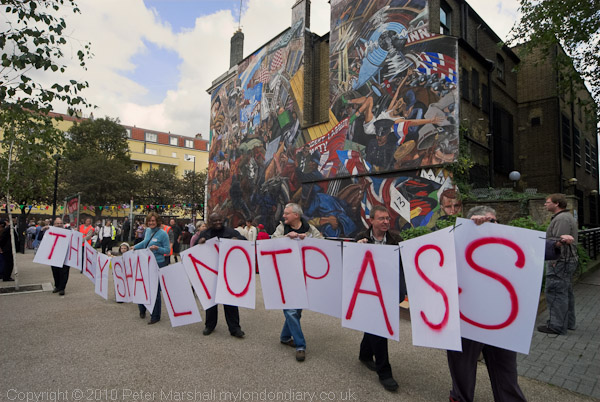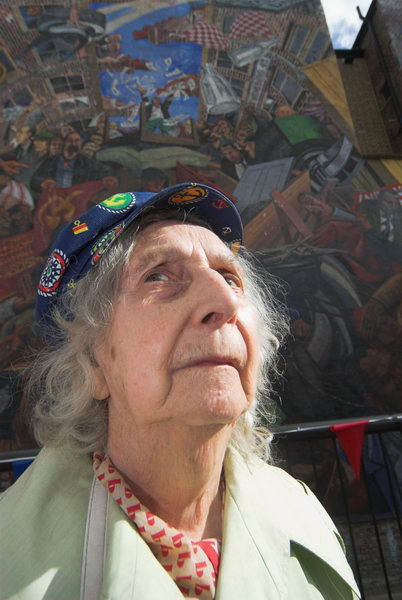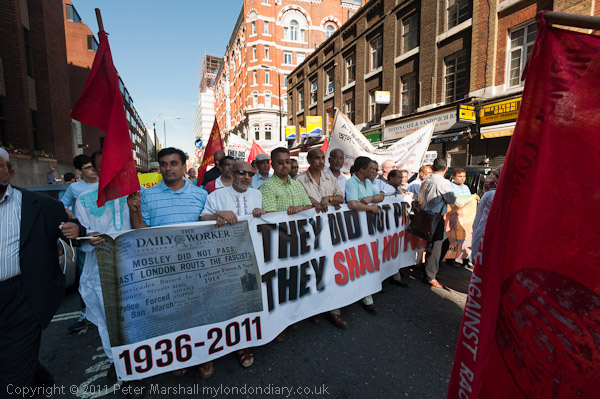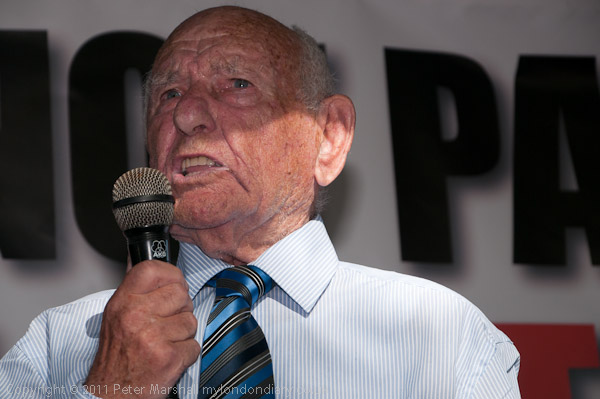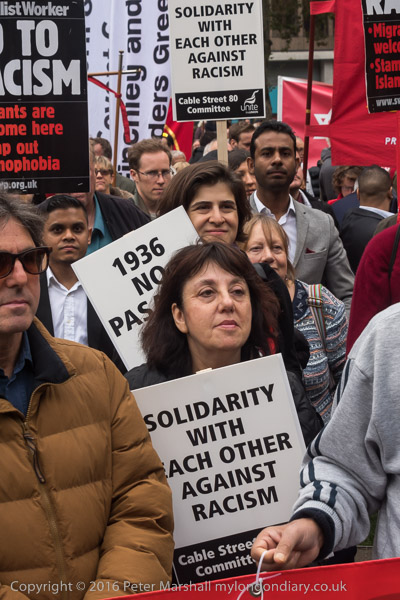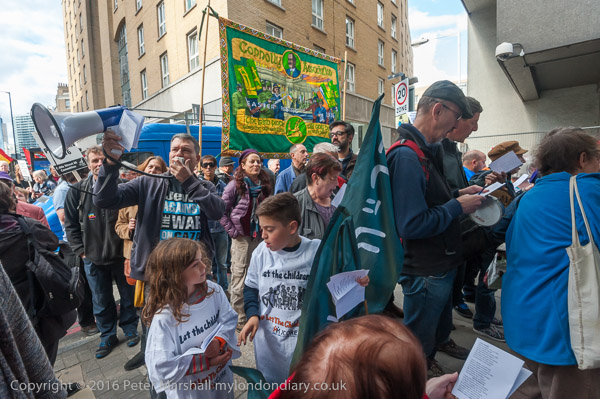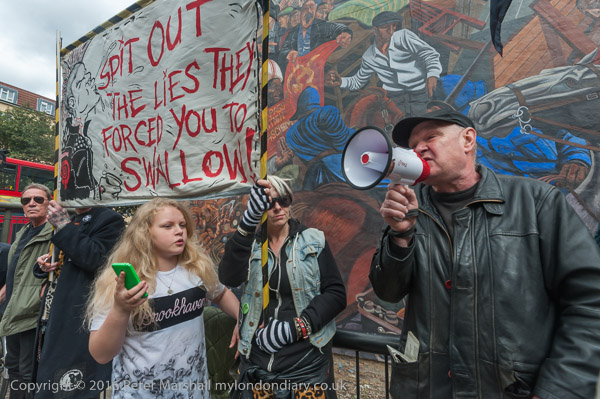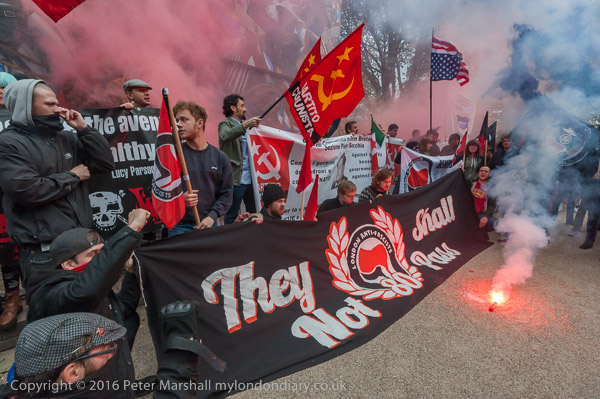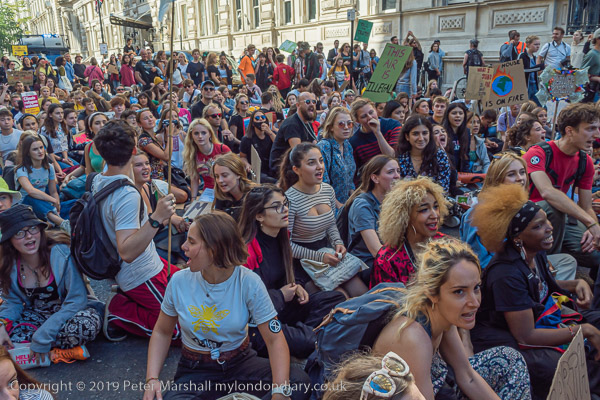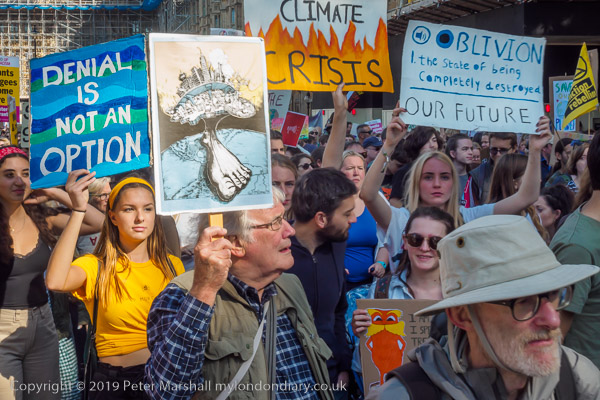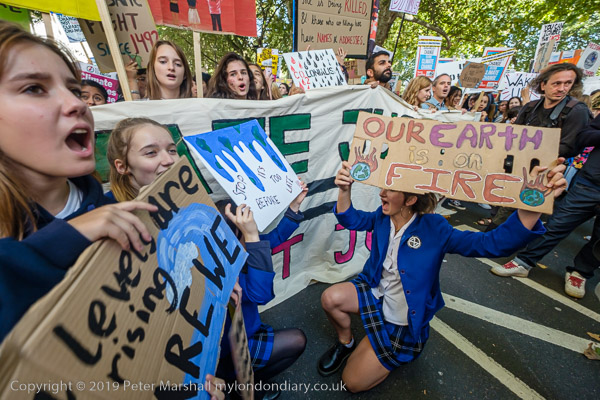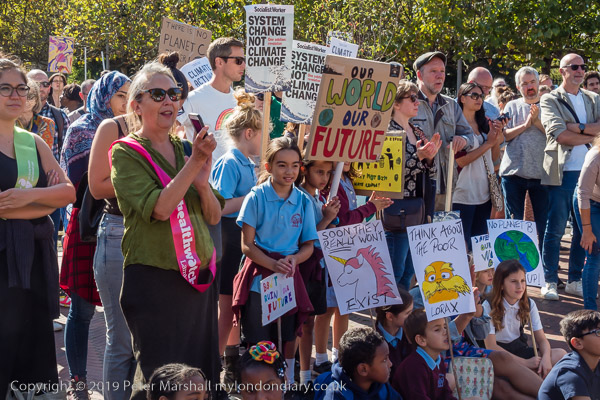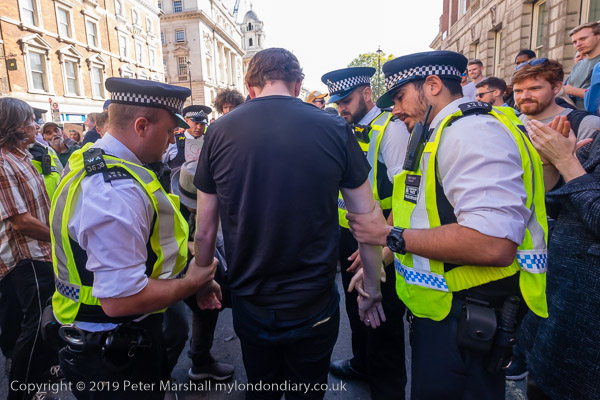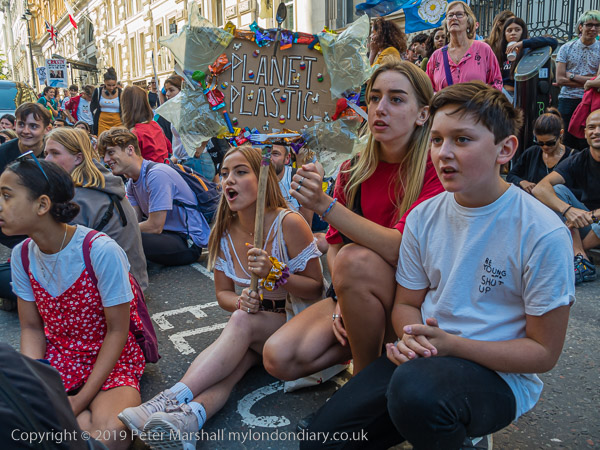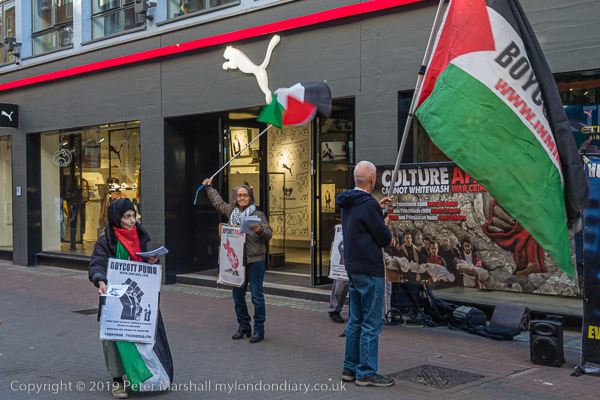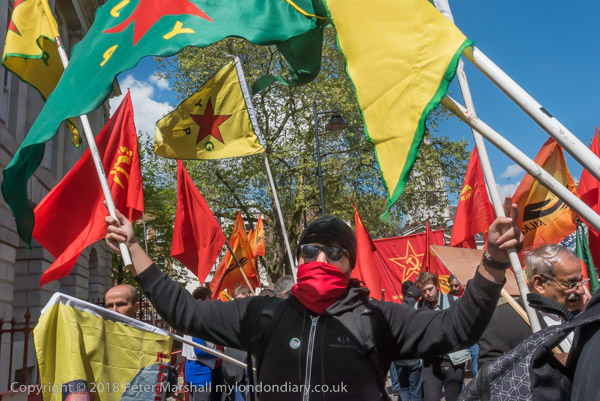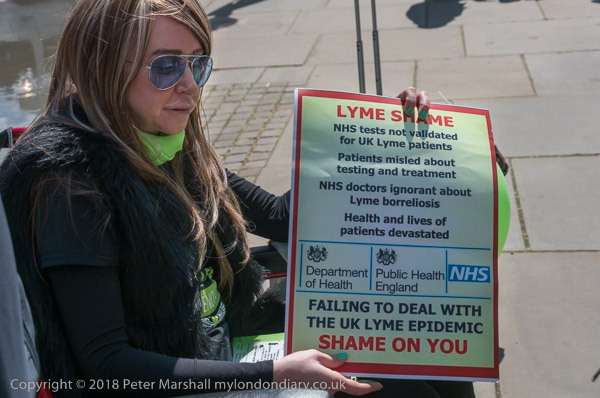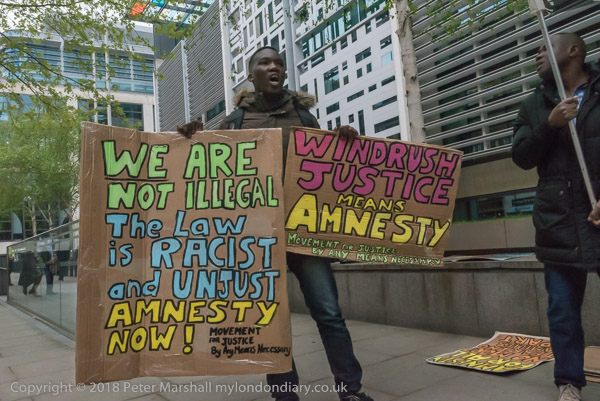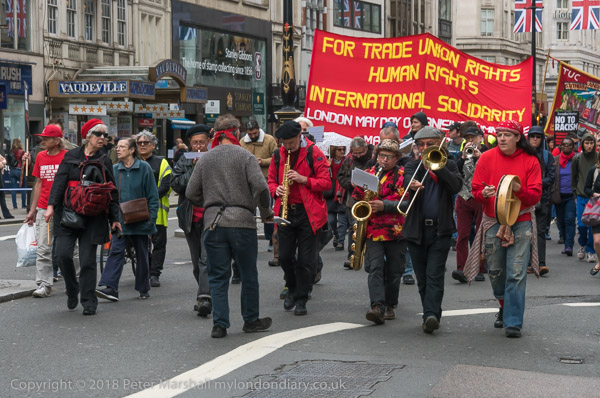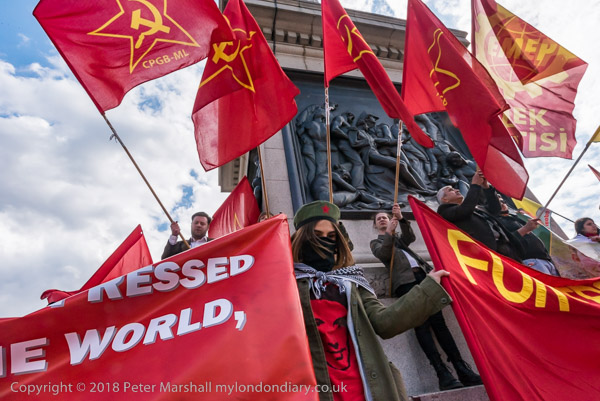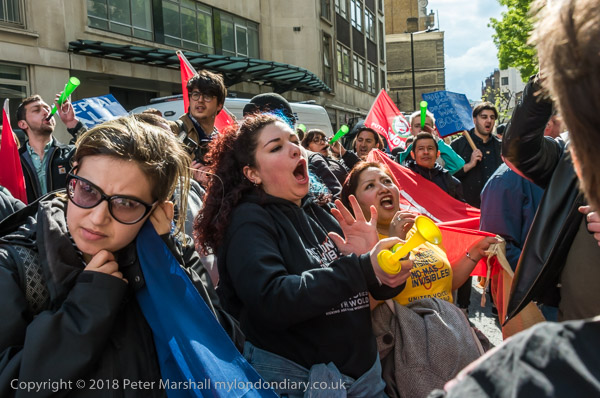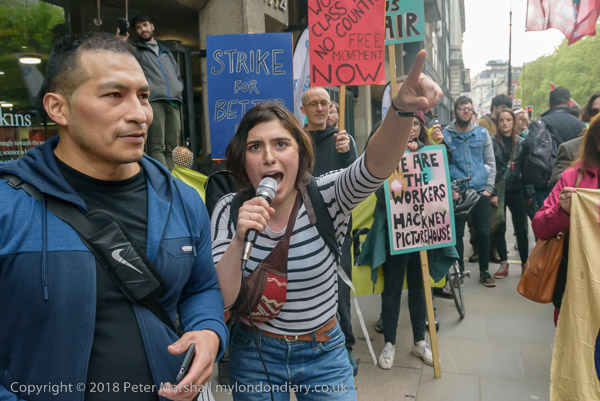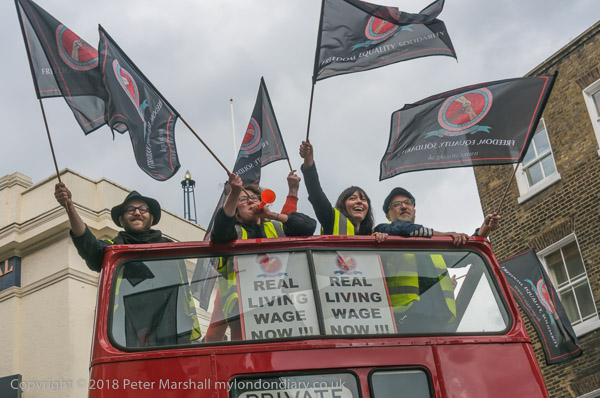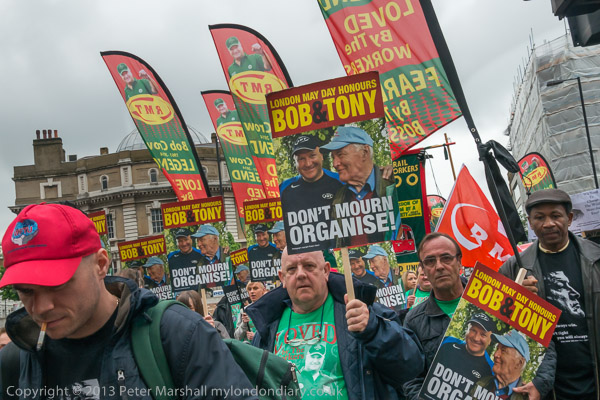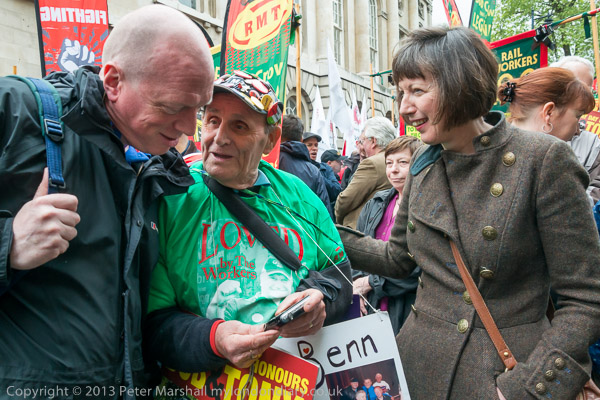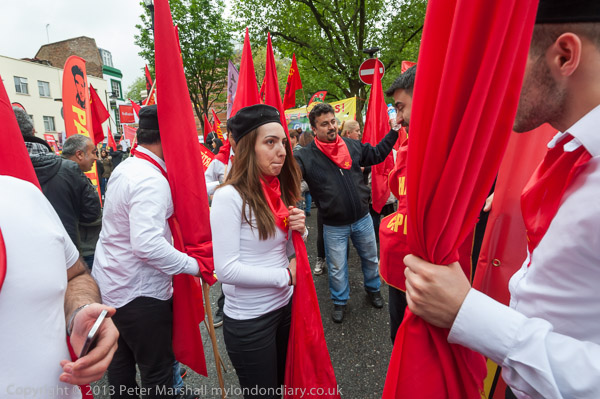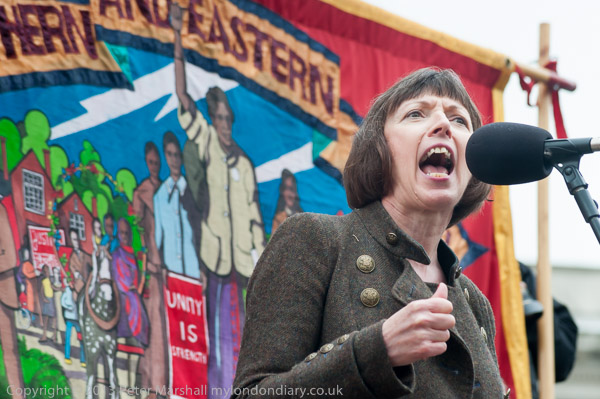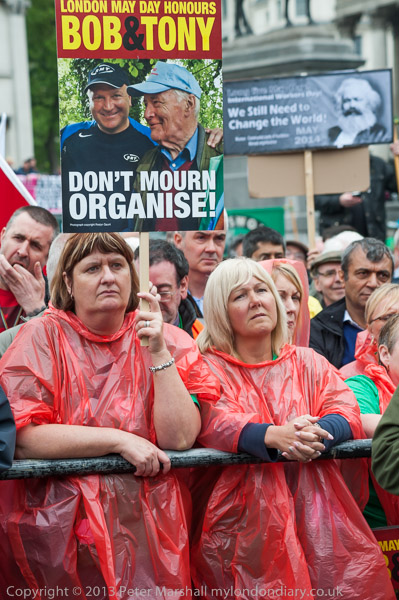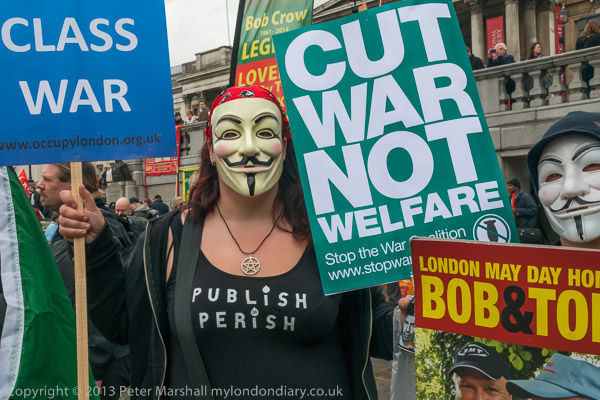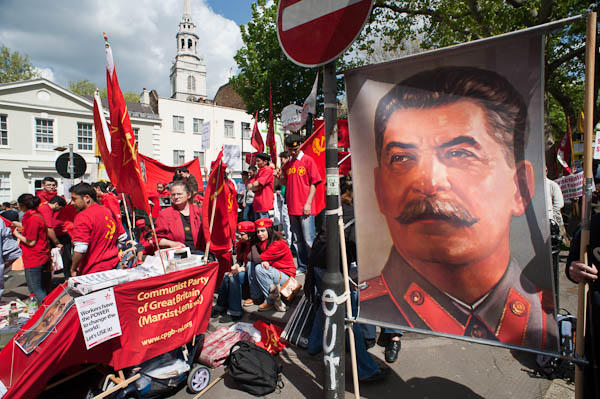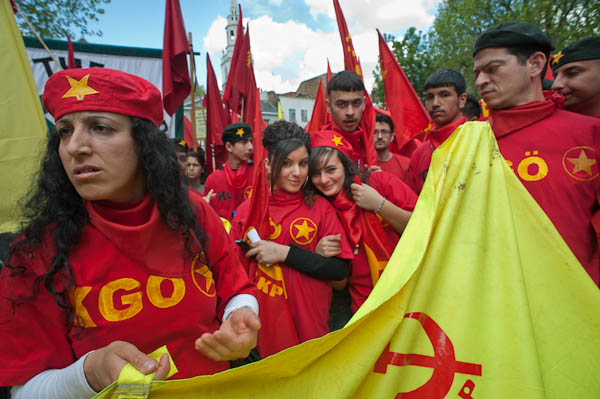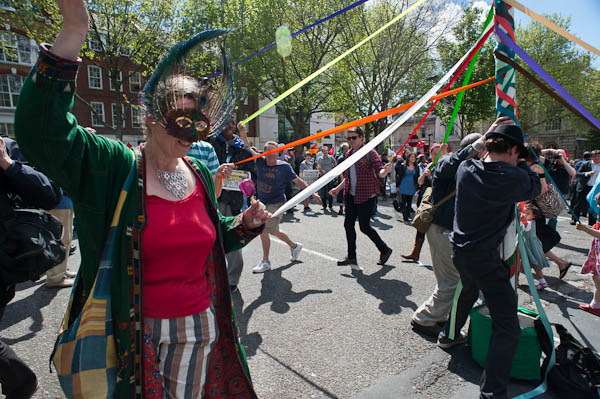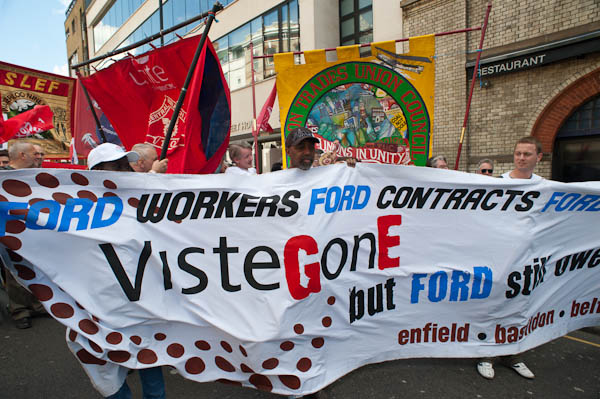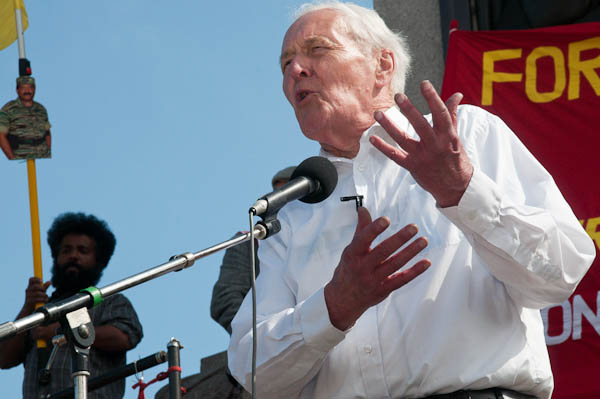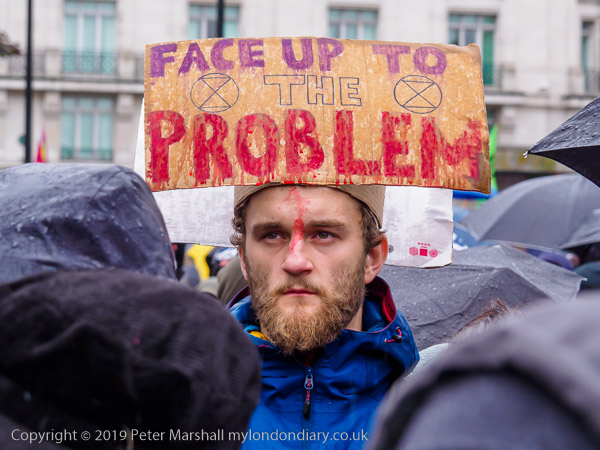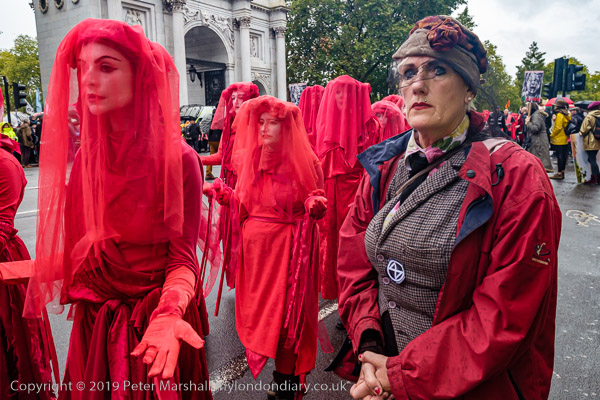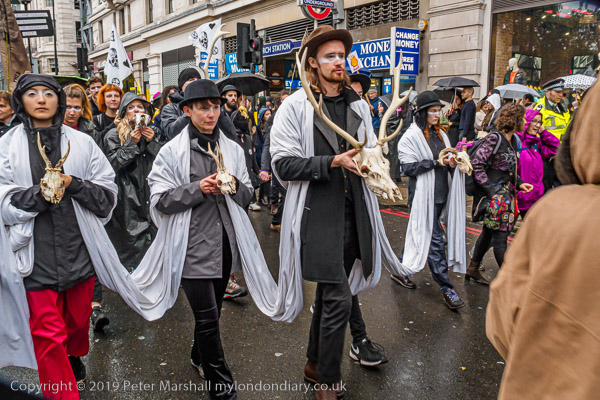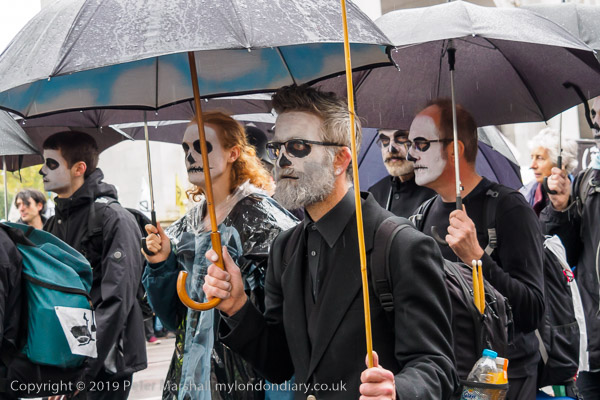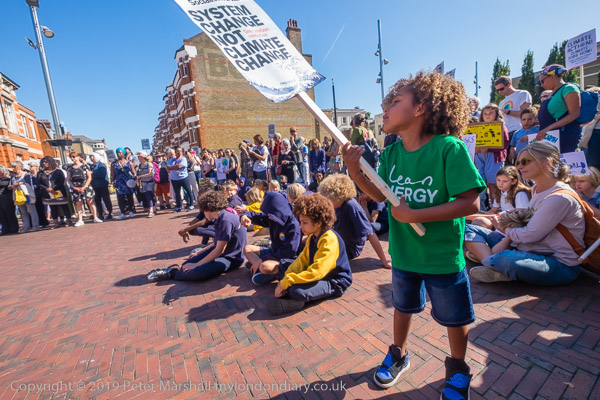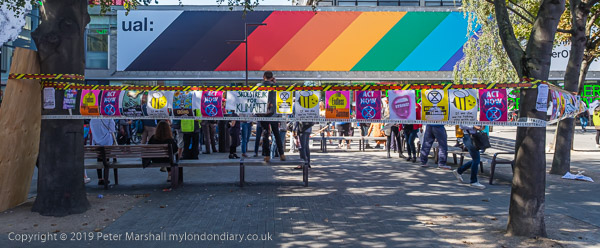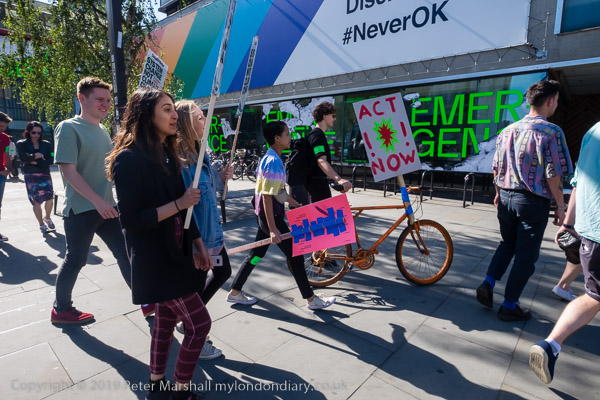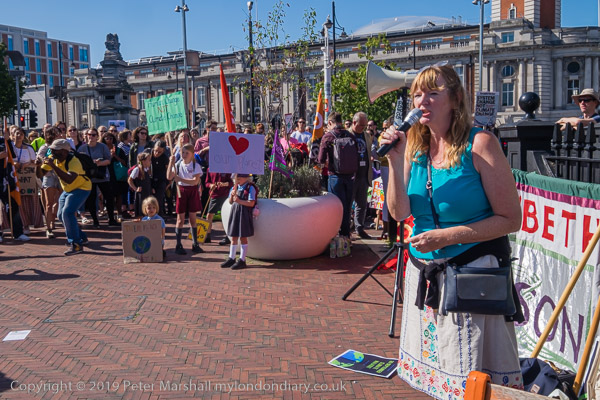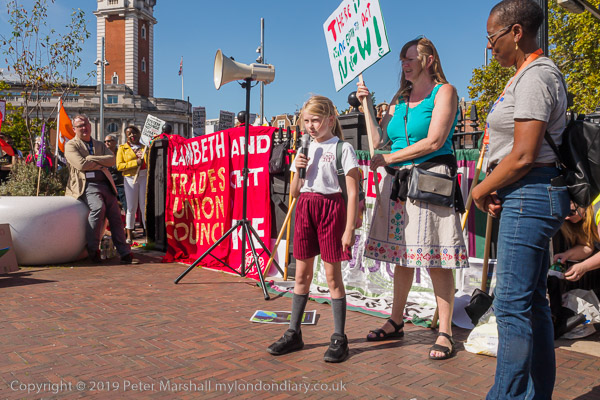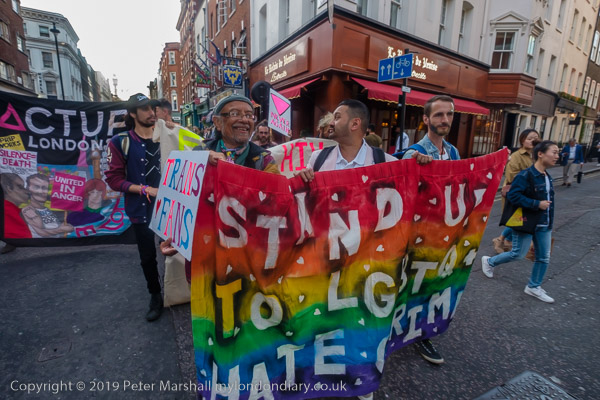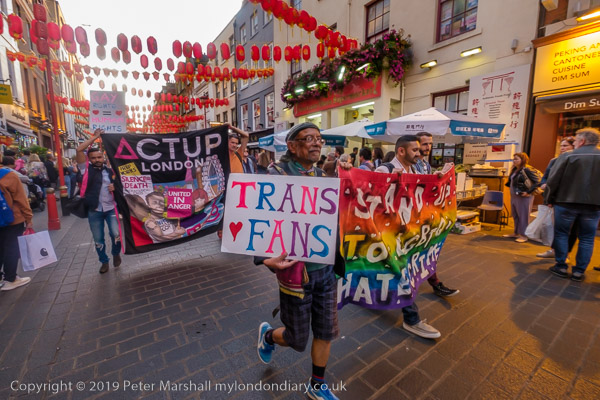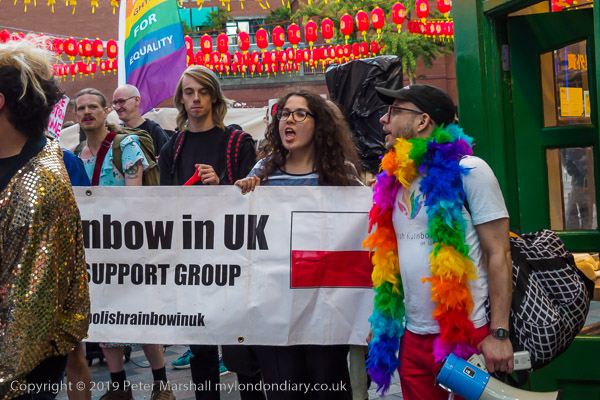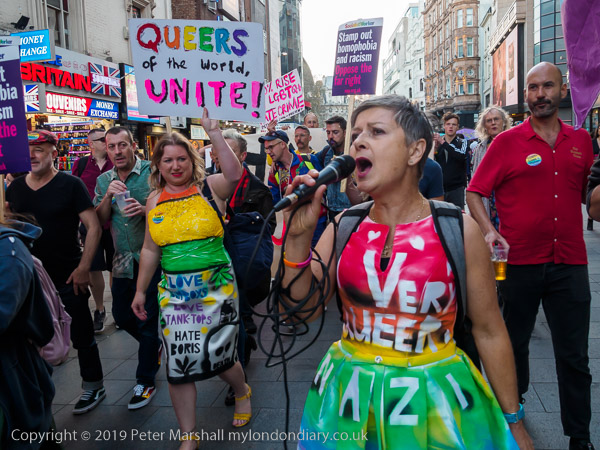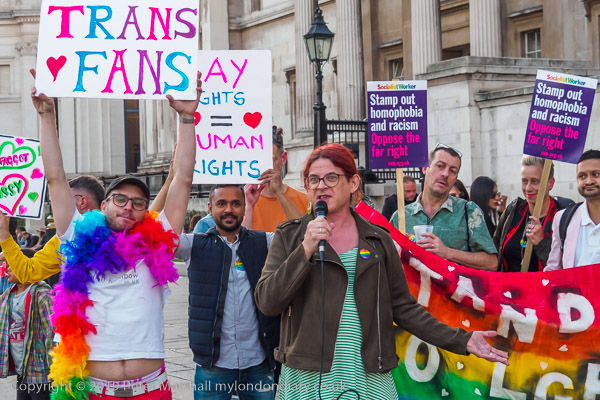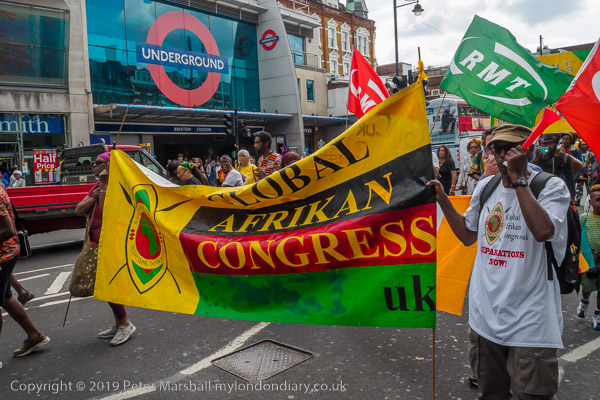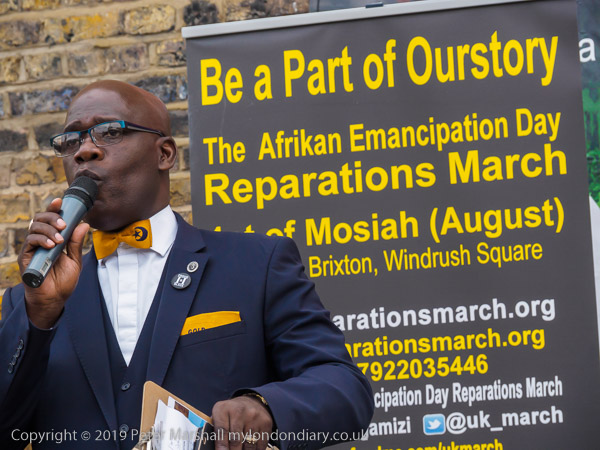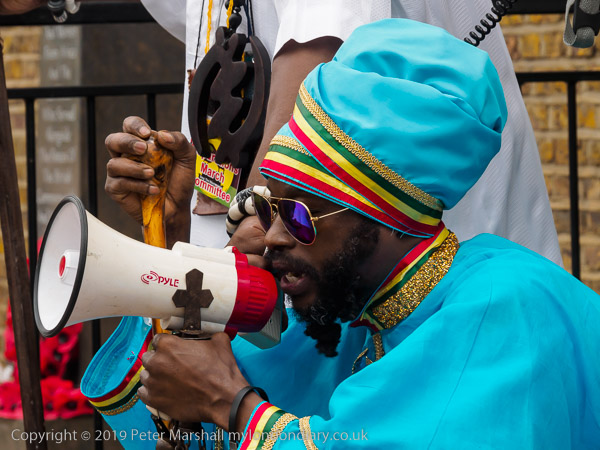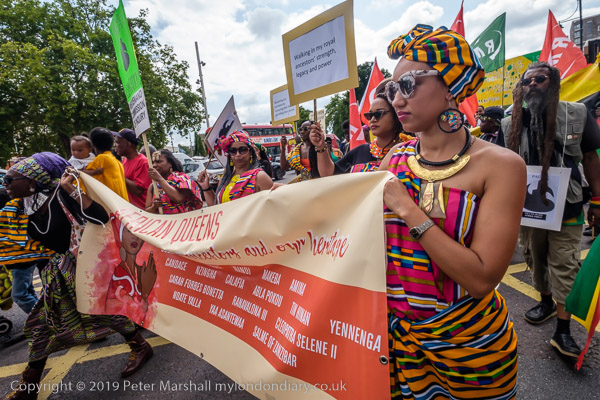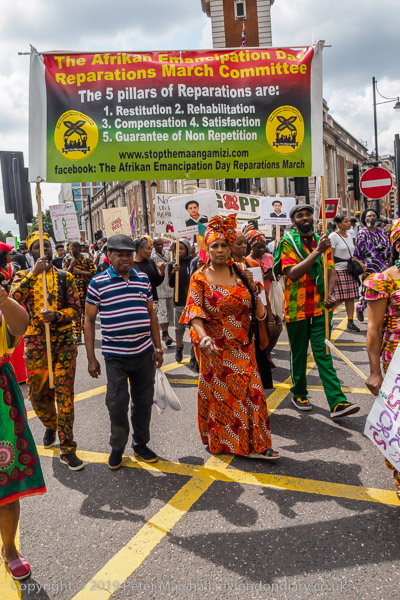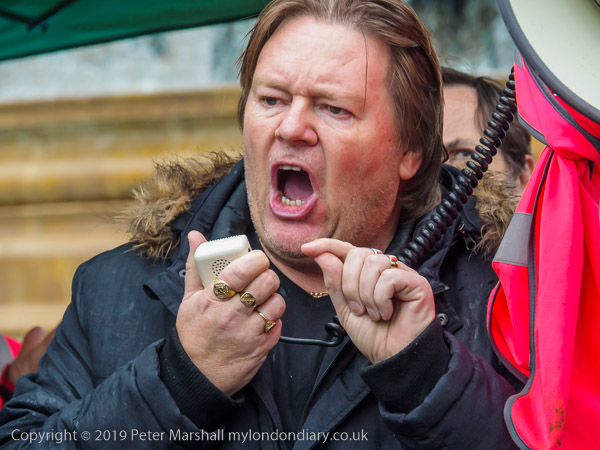
I was back with Extinction Rebellion on Saturday 12th October 2019, beginning in a rather wet Trafalgar Square, where Trade unionists were holding a rally in driving rain to show their solidarity with Extinction Rebellion and the school climate strikers. It was raining hard enough to make it difficult to take pictures, with rain drops settling immediately on my lens filters as soon as I wiped them off with my chamois leather held in my left hand.
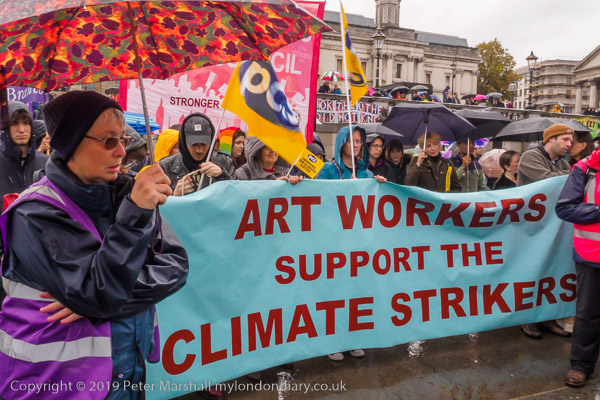
It’s hard to hold an umbrella and take photographs, though I did for some pictures, and sheltered under other people’s for others. But umbrellas both greatly restrict movement and also other people’s view and I don’t like to use one.
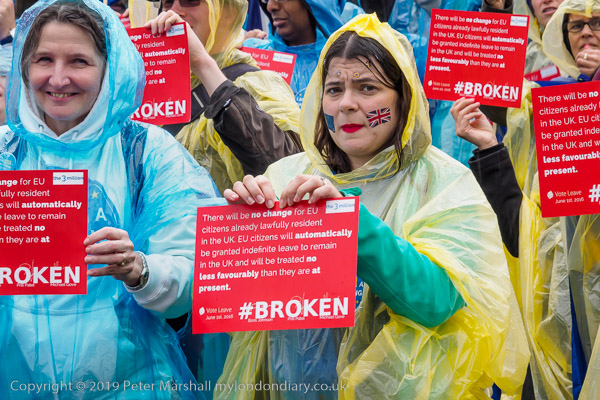
But Global Extinction was the only issue that campaigners were protesting about in Trafalgar Square, there were also a hundred or two campaigners from the 3 million organisation, EU residents living in the UK who were protesting against the promise broken by Vote Leave that “There will be no change for EU citizens already lawfully resident in the UK. EU citizens will automatically be granted indefinite leave to remain in the UK and will be treated no less favourably than they are at present.” They had dressed for their protest in blue and yellow rain ponchos, highly suitable for the weather.
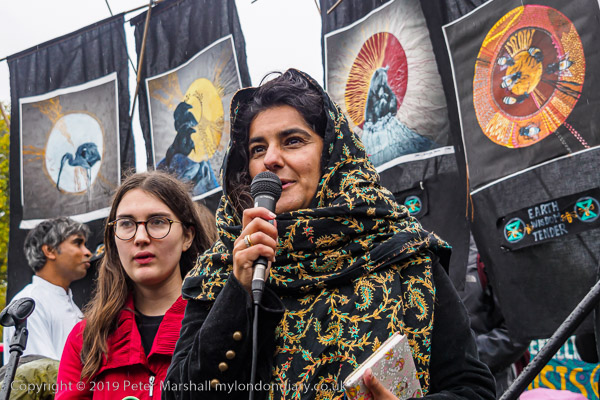
From Trafalgar Square I got on a bus to take me to Marble Arch. Although police had cleared XR from their road blocks and got the buses running, rain in London always results in slow-moving traffic, but the journey did give me time both to dry off a little myself and more importantly to clear most of the interior condensation which was misting up my lenses.
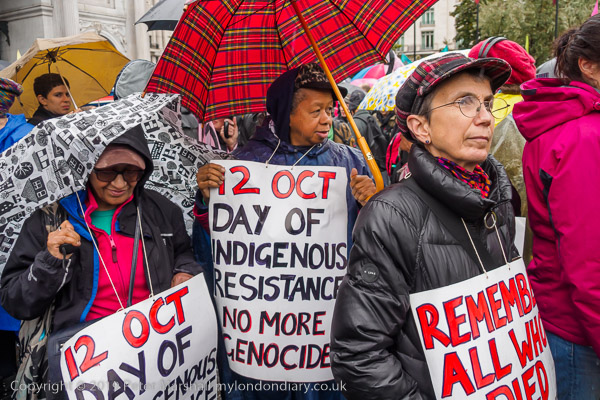
Extinction Rebellion’s main event was their ‘Strength in Grief ‘ procession on the Day of Indigenous Resistance marking the anniversary of Colombus’s landing in the Americas. It began with a number of speakers representing various communities across the world as well as others reflecting on both injustice and grief and the effects of global climate change already causing deaths and suffering across the Global South.
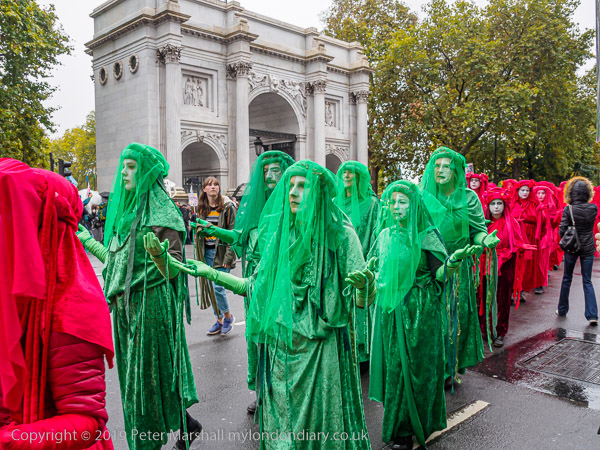
Fortunately the rain had eased off considerably, and had almost stopped by the time the rally ended and the march moved off down Oxford St, going to another rally outside the BBC who are largely failing in their duty to inform us about the threat of global extinction and the failures of our political systems to respond to it.
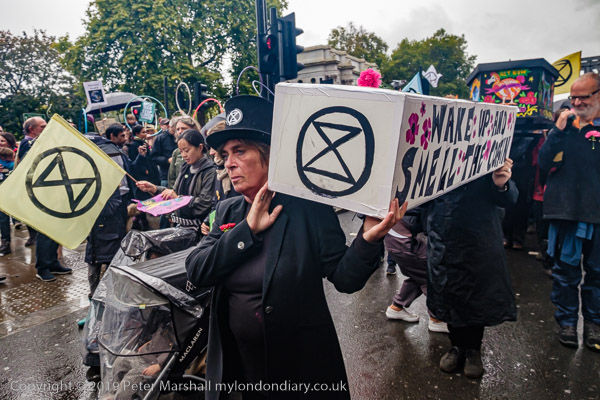
The campaigners marched on, but I’d had enough. I’d been working with my jacket open at the top so I could put my camera under it, but that meant the rain could get in around my neck, and after several hours I was rather cold and wet, and my lenses were steaming up again. I stopped close to Bond Street station and photographed the rest of the march – several thousand, many in interesting costumes – as it went along Oxford Street until the last marchers had passed me, then made my way down to the station.
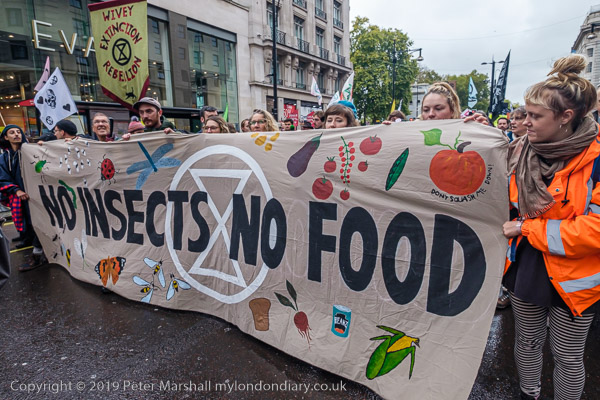
Many more pictures from the three events on My London Diary:
XR Strength in Grief Procession
Brexit unfair for EU citizens
Trade Unionists join the Rebellion
All photographs on this and my other sites, unless otherwise stated, are taken by and copyright of Peter Marshall, and are available for reproduction or can be bought as prints.
